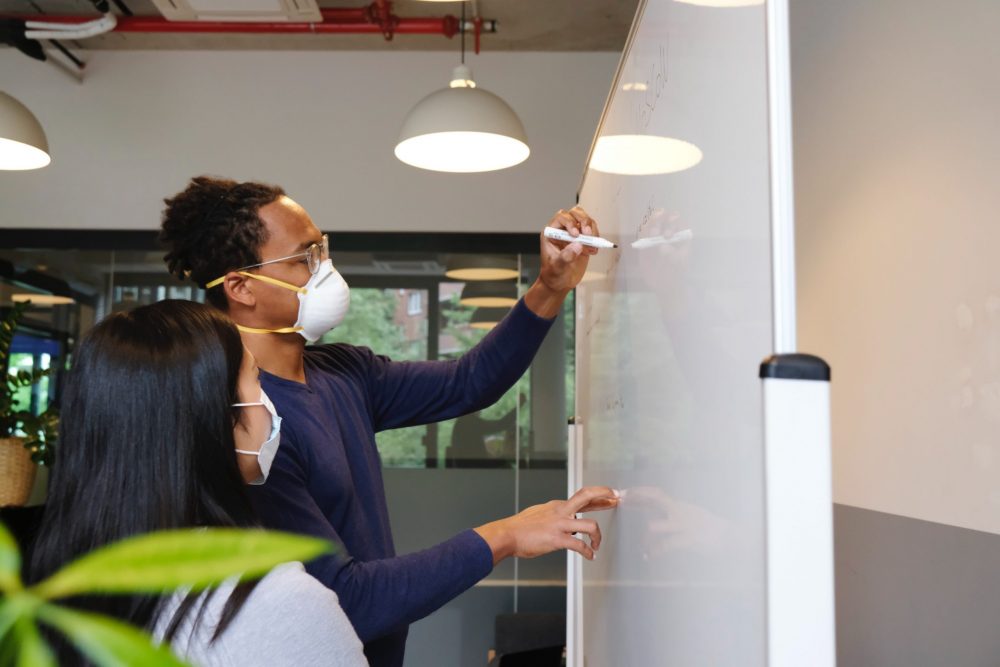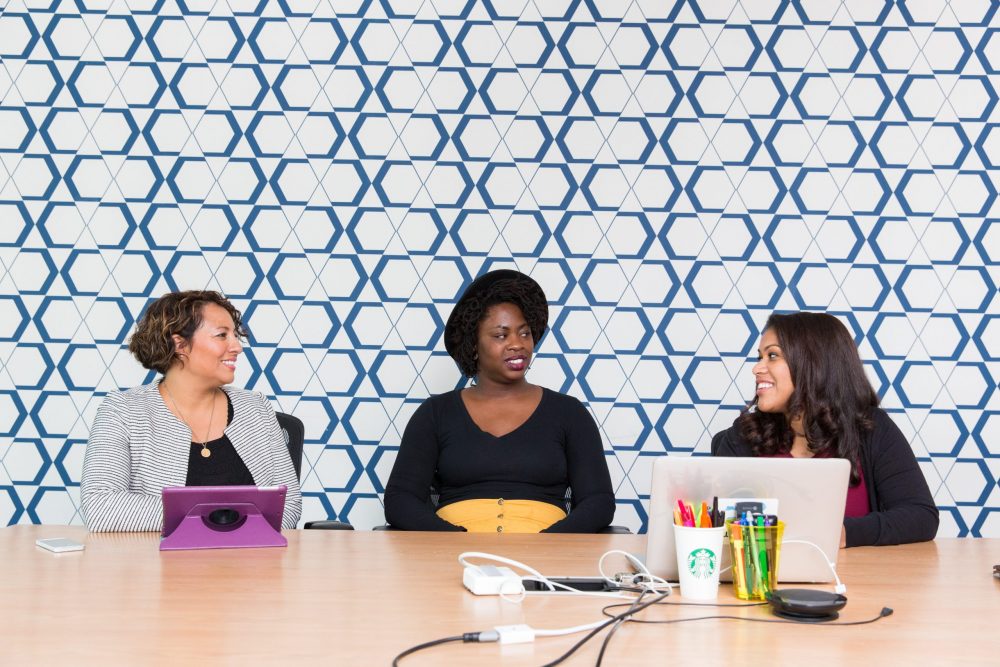Mental health advocate and psychotherapist, Asha Tarry shares advice for reducing employee anxiety when returning to work after COVID-19 and post-racial tensions.
Living in these “new normal” times after the impact of COVID-19 and racial tensions can increase people’s anxiety. Some are especially anxious to go back to work in their office or stores and having to be closer to their colleagues. Maintaining social distance is the main concern, because people do not know how this will affect their working area and their schedules. It is very normal to be dealing with more anxiety or stress than usual. But there are still a few things you can do to guarantee you continue to take care of yourself, your mental health, and your co-workers or employees.

Company Size and Employees’ Safety
One of the main concerns is the size of the companies expecting employees to go back to work. Depending on this, there are different levels of safety measures being enacted to protect their employees’ health. In larger organizations, the budget is more available for there to be sanitary measures and protocols for social distancing in place. However, they have a larger number of employees, and there is a fear around the distance they will be able to keep in elevator, cubicles, or the open workspaces. That is why companies will most likely have to do a trial and error with different strategies to keep social distance. Getting people back to work will be helpful for our economy, but it is going to potentially increase people’s anxiety regarding how companies will be able to protect them.
As a small business owner, I already have experience working remotely and know it is a helpful alternative. But I know there are others who must absolutely get back to work. Most of them probably have the ability to create better social distancing protocols. The only problem might be not having the budget to keep the constant sanitation of the office or workspace, so that people are protected enough. Will companies expect employees to provide their own sanitary measures, such as facemasks and gloves? That is something we will have to wait and see how it is dealt with.

Terms to Negotiate for a Better Workspace
This is the time for employees to negotiate the kind of practices they want to be involved in. I encourage everyone to talk to their bosses about setting up different schedules, so not every employee is in the office at the same time, or about the option to continue working from home. You need to leverage you voice. Specifically, for employees of color, now is the time to speak to the science behind what we have seen, which is people of color having a higher risk of contracting COVID-19. Use this evidence to explain why you want to keep yourself safe and to negotiate the best practices possible for you to perform your job without risks.
I would also suggest working with colleagues who have similarities–such as race, ethnicity, or gender identity–to collaborate in creating a better workspace. This will help decrease the likelihood of being targeted if you speak up or the likelihood to be deemed uncooperative.

Self-Care and its Importance
People should not abandon their self-care routines. Until we are actually back in the swing of “normal” life, it will be hard to determine what self-care techniques will remain useful. As we reintegrate back into society, you may have found that some of the things you worked on independently or with a therapist are no longer working, and this can be frightening. It is important to not abandon things that you have tried, such as deep breathings. Imagining what it would look like to get up, get dressed, leave the house, take public transportation, and things you may need to be able to relax, can be really helpful to mentally prepare for what the actual steps may include to return to work.
It is necessary to remain vocal when you notice your self-care routines or habits no longer work. Sometimes, we need to evaluate when the things we have been trying or using do not work for us any longer. When they do not work, it is important to speak up about it and the anxiety it may be causing. This includes talking privately to your manager or employer to protect your emotional space. Stay conscious of what is working and what has stopped working to be aware of what triggers you may have at work.

Build a Community
It is going to become increasingly important to stay committed to building a community after we return to work. It will not just be the people who look like us or who live around us, but those communities who have gone back to work. Those people will spend most of their waking hours working, and now is the time when employers are going to have to look for mental health prevention methods to keep employees psychologically and physically safe. This could be done by HR providing supportive services, resources around people having outlets for mental health, or meditation spaces where employees can go when they are feeling anxious or stressed at work. Employers will need to stay flexible, in order to satisfy their employees needs and having safe places will be extremely important to help decrease any fears they may have.
Employers will have to see their employees as experts on what they need. We all have to collaboratively work to build communities to help each other feel less tension and less stress about being at work. If we do that and continue to speak up about what would make our workspace feel safer, our anxiety will begin to decrease. It is important to remember that, although we have to maintain social distance, we are all experiencing this together and can rely on one another to get through the rough patches. By speaking up, sharing our fears and feelings, creating safe places, and understanding each other’s needs and triggers, we are helping ourselves and our colleagues reduce their anxiety and stay stress-free as possible when going back to the office, the store, or our respective workplaces.

